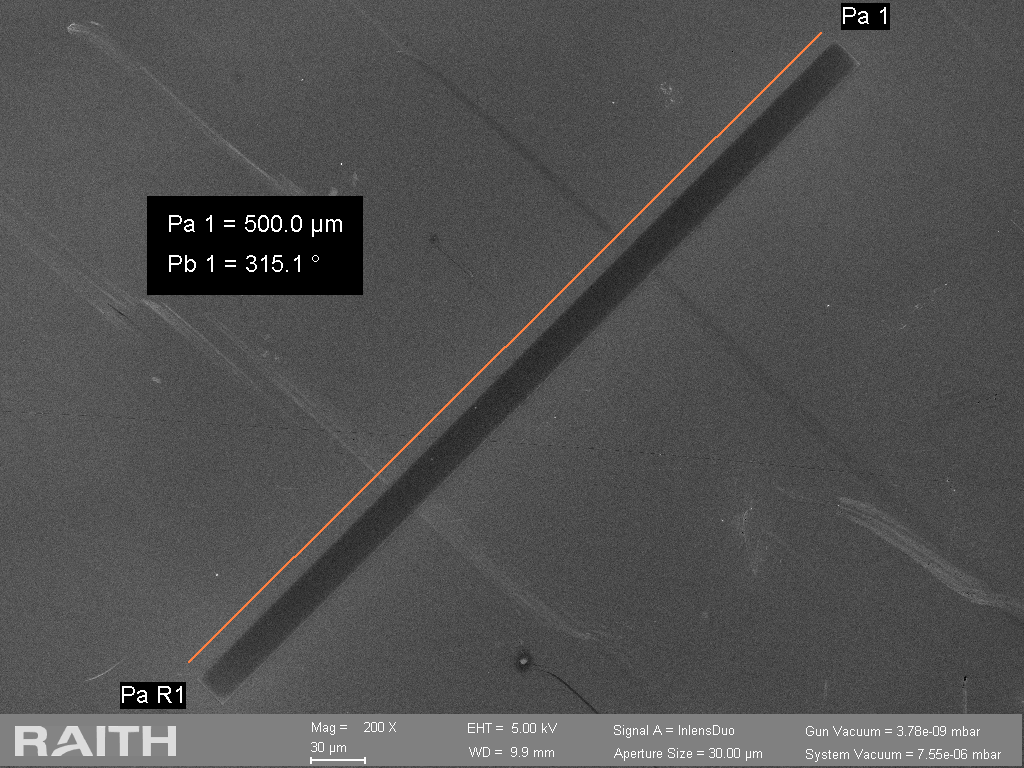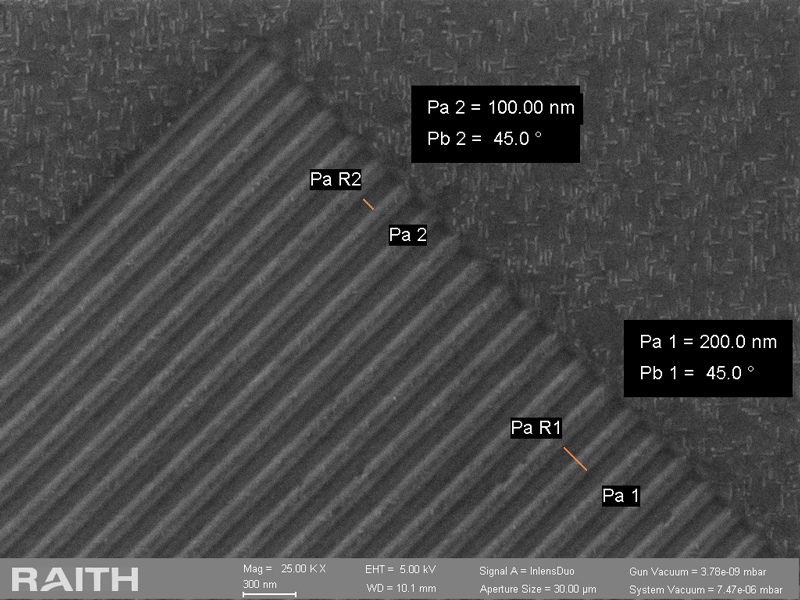
In a stormy ocean, whales dive to avoid troubled water. Sound which would be scattered by the ocean waves is protected underwater and can propagate for hundreds of kilometers. This helps whales to hear in their surroundings and to communicate with each other even at huge distances. Can this effect of undersurface protection of sound be adapted for communication at the nanoscale? The research performed by an international team of scientists with structures produced by RAITH gives the answer: Yes!

Protected propagation of sound waves at the nanoscale is a topical problem. Many nanoscale communication concepts utilize high-frequency acoustic waves propagating along the surface for data encoding and transfer. Surface acoustic waves of GHz frequencies and wavelength down to 100 nm (often referred to as hypersound) have already demonstrated their potential for quantum communications. However, they are operable only on perfect defect-free surfaces; any corrugation results in intensive scattering as with sound in the ocean. This fact significantly complicates on-chip architecture. It is extremely desirable for sound to dive under the surface, where it is protected from scattering even in he case of a strongly corrugated surface.
The way to achieve protected undersurface propagation of hypersound is demonstrated in collaborative research performed by scientists from Germany, the United Kingdom, France, Ukraine, and Russia. The examined design is a sandwich consisting of three layers:
- substrate,
- planar periodic semiconductor structure (a superlattice) serving as an undersurface acoustic waveguide, and
- a metallic nanograting on the top of it.
The nanograting produced by quantum communications has 200-nm periods and 25-nm depths and serves as an optoacoustic antenna which converts the laser pulse to the bunch of acoustic waves and, vice versa, allows the propagating acoustic waves to be detected by modulation of the reflected light. Excitation of the nanograting by a 100-femtosecond (10-13 s) laser pulse focused on the 1-micron spot generates two acoustic bunches: the bunch of surface acoustic waves, which propagates on the nanograting surface, and the undersurface waves, which propagate parallel to the surface inside the semiconductor waveguide. While the waves on the surfaces suffer from scattering and decay completely within ~10 microns, the undersurface wave propagates over distances of up to 100 microns.



